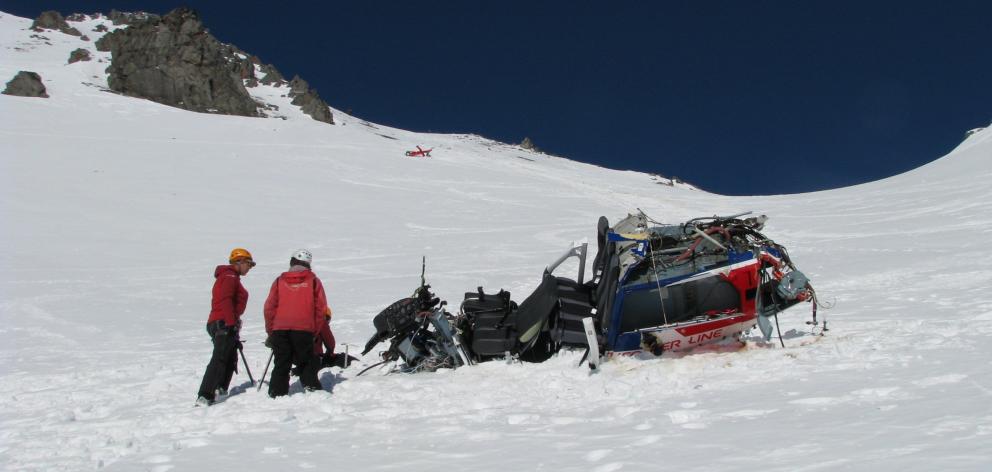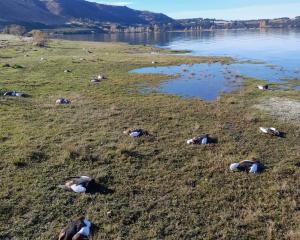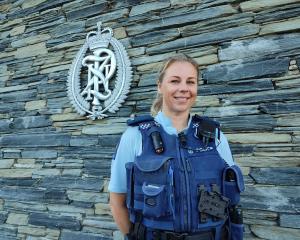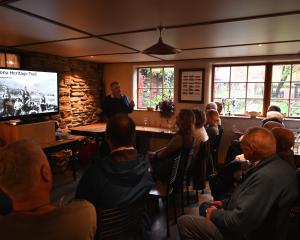
In a report released yesterday, the commission said there were no mechanical issues with the helicopter, and the crash could have been prevented.
Chief commissioner Jane Meares said the accident happened as the helicopter operated by The Helicopter Line was approaching its landing site.
"The helicopter went below the pilot’s intended angle of approach, so the pilot turned it away from the ridgeline, but he couldn’t avoid the terrain."
The helicopter struck the slope heavily; the cabin broke apart and five of the seven occupants were ejected as it rolled 300m down the mountain.
The report found it was "very likely that several of the passengers’ seatbelts were not securely adjusted".
It said if seatbelts were loosely fitted, occupants were more likely to be ejected from an aircraft and the seatbelts would be more prone to inadvertently releasing in an accident.
Ms Meares said the crash was caused by overloading.
"The helicopter was loaded about 30 kilos over the maximum permissible weight, and its centre of gravity was just [3cm] forward of what was allowed, and was operating at or close to the performance limit for hovering in this situation."
"It is not difficult to weigh every passenger who is undertaking heli-skiing. Every passenger passes through some point where this could occur. It is also not difficult to provide pilots with devices that enable them to calculate accurately the weight and balance of their helicopters ... in the field should that be required," the report said.
Pilot Dave Matthews noted he felt a slight sink when he approached the landing site and immediately initiated an escape manoeuvre.
However, he said the rate of descent had increased rapidly and unexpectedly, and the helicopter struck the steep slope nose-down.
Mr Matthews continues to be employed by The Helicopter Line, but no longer flies.
Marks in the snow showed the fuselage rolled at least 25 times before coming to a rest upright 300m from the first impact point.
The smash resulted in the death of Auckland construction company owner Jerome Box (52).
The report said Mr Box’s injuries "were consistent with having been struck by the broken right skid, and being ejected from the helicopter and caught between it and the slope as the helicopter came to rest".
The commission believed the accident and others suggested a culture existed among some New Zealand helicopter pilots of operating their aircraft beyond published and placarded limits.
The commission said such a culture adversely affected the safety performance of the helicopter sector.
It had recommended the Civil Aviation Authority included this potential safety issue in its current helicopter "sector risk profile" review.
The Helicopter Line experienced four helicopter crashes on snow between 2013 and 2016, and director Mark Quickfall said the company had made changes to its procedures in light of the incidents.
"All those who may load passengers into an aircraft are reminded that the seatbelt must fit snug across the hips of the passenger during the loading process. Further, harnesses, where fitted, must be worn."
Mr Quickfall said since November 2015, only actual passenger weights were used.
He said there were specific heliski assessments with each heliski pilot before and during the season.
To further correct any errors in their processes, Mr Quickfall had invited a senior member of the Canadian helicopter industry to review their systems.
He said some constructive feedback was received from the review.In briefing papers to Associate Transport Minister Julie Anne Genter, the commission said the number of helicopter crashes was a concern.
It said of the 13 aviation inquiries at the end of July this year, 10 involved helicopters.
The commission also told Ms Genter three of the helicopter accidents it had dealt with over the past year had been in the tourism sector.
- Sean Nugent










